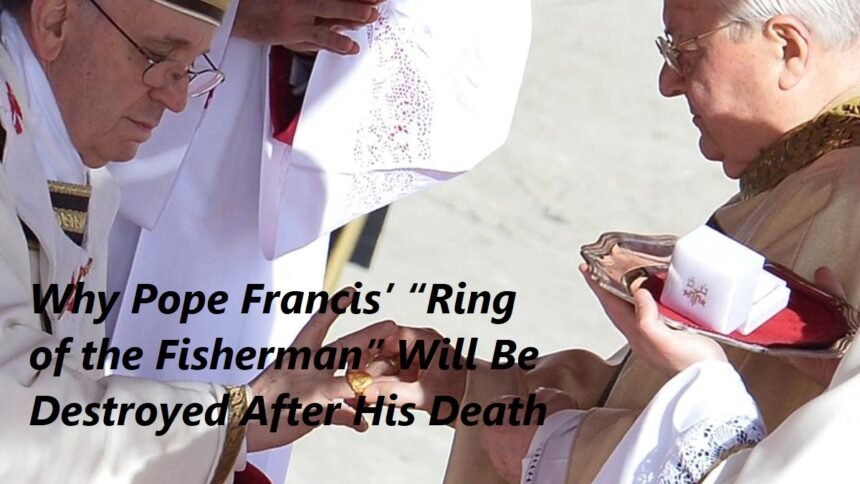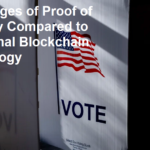Following the centuries-old tradition of the Catholic Church, the personal seal of Pope Francis—the Anulus Piscatoris (Ring of the Fisherman)—will be ceremonially destroyed upon his death. This ritual, rooted in medieval practices, underscores the symbolic and practical measures taken to ensure the integrity of papal authority during the transition between pontificates.
The Ring of the Fisherman: Symbol of Papal Authority
The Ring of the Fisherman, a gold signet ring engraved with the reigning pope’s name and an image of St. Peter casting a net, has been used since the 13th century to authenticate official documents, known as papal bulls. Pope Francis’ ring, designed by Italian artist Enrico Manfrini in 2013, features a simpler, silver-coated bronze design, reflecting his emphasis on humility. Unlike ornate predecessors, it lacks precious stones but retains its core function: imprinting the pope’s seal on wax or lead to validate decrees.
Why Destruction? Historical and Practical Reasons
The destruction of the ring serves two primary purposes:
- Preventing Fraud: Historically, the pope’s death created a risk of forged documents being issued under his name during the interregnum (period between popes). Destroying the ring ensures no illegitimate orders can be sealed.
- Symbolic Transition: The act marks the definitive end of a pontificate, clearing the way for the conclave to elect a successor. The ritual, overseen by the Camerlengo (cardinal chamberlain), involves striking the ring with a silver hammer to deface its seal.
This tradition dates to a time when papal decrees could sway kingdoms, and forgery was rampant. While modern technology reduces such risks, the ritual persists as a nod to continuity and solemnity.
A Medieval Ritual in the Modern Church
Pope Francis, known for reforming Vatican protocols, has not altered this custom. His ring’s destruction will mirror that of his predecessors, including Pope Benedict XVI, whose ring was crushed in 2013—though uniquely, Benedict retained the title “pope emeritus” after resigning. For Francis, the ceremony will reaffirm the Church’s adherence to tradition, even as it modernizes other practices.
The Vatican’s Master of Pontifical Liturgical Celebrations, Archbishop Vittorio Francesco Viola, explains: “The destruction of the ring is not an act of disrespect but a sacred duty. It protects the Church’s governance from ambiguity and honors the pope’s legacy by ensuring his authority concludes with his earthly life.”
Controversies and Modern Criticisms
Some historians and theologians question the necessity of the ritual today. Dr. Catherine Pepinster, author of The Keys and the Kingdom, argues, “In a digital age, where papal documents are electronically signed, the ring’s physical destruction feels archaic. Yet its symbolism—of mortality and renewal—remains potent.”
Others note that the lead seal (bulla) attached to papal decrees is also destroyed posthumously, further emphasizing the finality of the pope’s passing.
What Happens Next?
After the ring’s destruction, the Camerlengo oversees the Vatican’s administrative functions until a new pope is elected. The conclave will cast a new ring for the successor, inscribed with his chosen name. For instance, if Cardinal Pietro Parolin were elected, the ring would bear “Petrus II” or another regnal name.
A Tradition That Endures
While Pope Francis has embraced simplicity—eschewing the traditional red papal shoes and ornate vestments—the Ring of the Fisherman’s fate highlights his respect for institutional heritage. The ritual’s endurance reflects the Vatican’s balancing act: preserving ancient customs while navigating a rapidly evolving world.
As Vatican spokesman Matteo Bruni stated, “Tradition is not about clinging to the past but safeguarding the Church’s identity across generations. The destruction of the ring is a testament to the unbroken chain of apostolic succession.”
The planned destruction of Pope Francis’ Ring of the Fisherman is a poignant reminder of the Catholic Church’s blend of mysticism and pragmatism. Rooted in medieval concerns over legitimacy, the ritual today serves as a bridge between history and modernity, reinforcing the papacy’s timeless yet transient nature. As the world watches, this act will underscore a profound truth: even in death, the pope’s legacy is eternally sealed—not in gold, but in faith.












